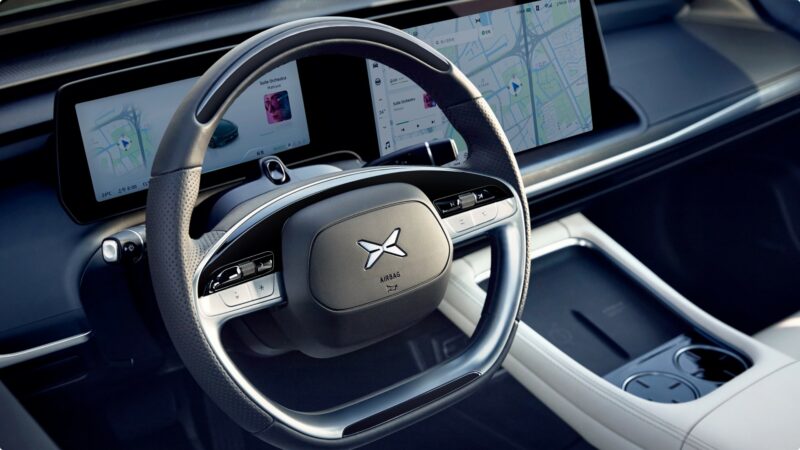Refreshed Xpeng P7i launched in China with 702km cruising range
On March 10, Xpeng launched the refreshed P7i with a starting price of 249,900 – 339,900 yuan ($35,880 – $48,800). The P7i is a facelift model of Xpeng’s P7 and receives updated styling, improved power, and a new LiDAR. Furthermore, the facelifted model now comes with improved cruising ranges: 610 km and 702 km. The new model is available in four trims; two 610 km variants and two 702 km versions.

It is important to note that the while the P7i is only being launched for the Chinese market, it is already offered in Europe as the Xpeng P7. The automaker launched it alongside the G9 SUV in February. So, the P7 is for the European market, while Chinese buyers get the P7i. The only major difference for both markets is the naming.
In terms of styling, the P7i is not much different from the original P7 and the biggest changes to the exterior are the front details. While split headlights have been retained, dual LiDARs integrated into the headlights are new. Also the headlights now have a higher brightness and illumination range. Compared with the old model, the high beam illumination range has increased by 20%.
Two new colors – Interstellar Green and Crescent Silver – have been added to the P7i to give buyers more choice.




Inside the vehicle, there are noticeable upgrades, including an all-new steering wheel with thicker cushions. Other changes include a new car fragrance system, liftable cup holder, vertical wireless charging stand, 60W Type-C front and rear wired fast charging, interactive buttons and storage space, etc.
The upgraded P7i is equipped with Xmart OS 4.0 system and adopts the Qualcomm Snapdragon SA8155P large-screen chip. Seats have also been improved, and there are now comfortable headrests/neck pillows, heated rear seats, and heated steering wheel. The driver also gets new hidden exclusive speakers.
For autonomous driving, the P7i is fitted with dual LiDAR, Xpeng’s second-generation driving assistance system (XNGP), XNet, and a full-stack self-developed system. The Max trim comes with dual Orin-X chips and 31 sensors with a computing power level of up to 508 TOPS, which is significantly improved compared to the 30 TOPS computing power of the outgoing model.

Where it matters the most, the new car still provides two-wheel drive and four-wheel drive models to choose from. The two-wheel drive model has a maximum power of 203 kW, a maximum torque of 440 Nm, an acceleration time of 0-100 km/h in 6.4s, and a cruising range of 702km under CLTC conditions. On the other hand, the dual-motor four-wheel drive model has a maximum power of 348 kW, a maximum torque of 757 Nm, an acceleration time of 0-100 km/h in 3.9s, and a cruising range of 610 km under CLTC conditions.

The XPeng P7i will continue to be built on the regular 400V platform, rather than the 800V high-voltage platform used in the G9. However, the P7i’s maximum charging power has been increased to 175 kW from its predecessor’s 90 kW. Accprding to Xpeng, charging from 10 – 80% takes as little as 10 minutes
The P7 is Xpeng’s best-selling model and was responsible for nearly half of the automaker’s sales in mainland China in 2022. However, like other Chinese automakers, Xpeng also reduced the price of the outgoing P7.
The biggest competitors for the P7i are the Tesla Model 3 and BYD Seal. In February alone, Xpeng shipped 6,010 units of the P7, and last year it sold 59,066 units. The automaker is hoping to achieve similar success with its updated model.
Source: Xpeng








